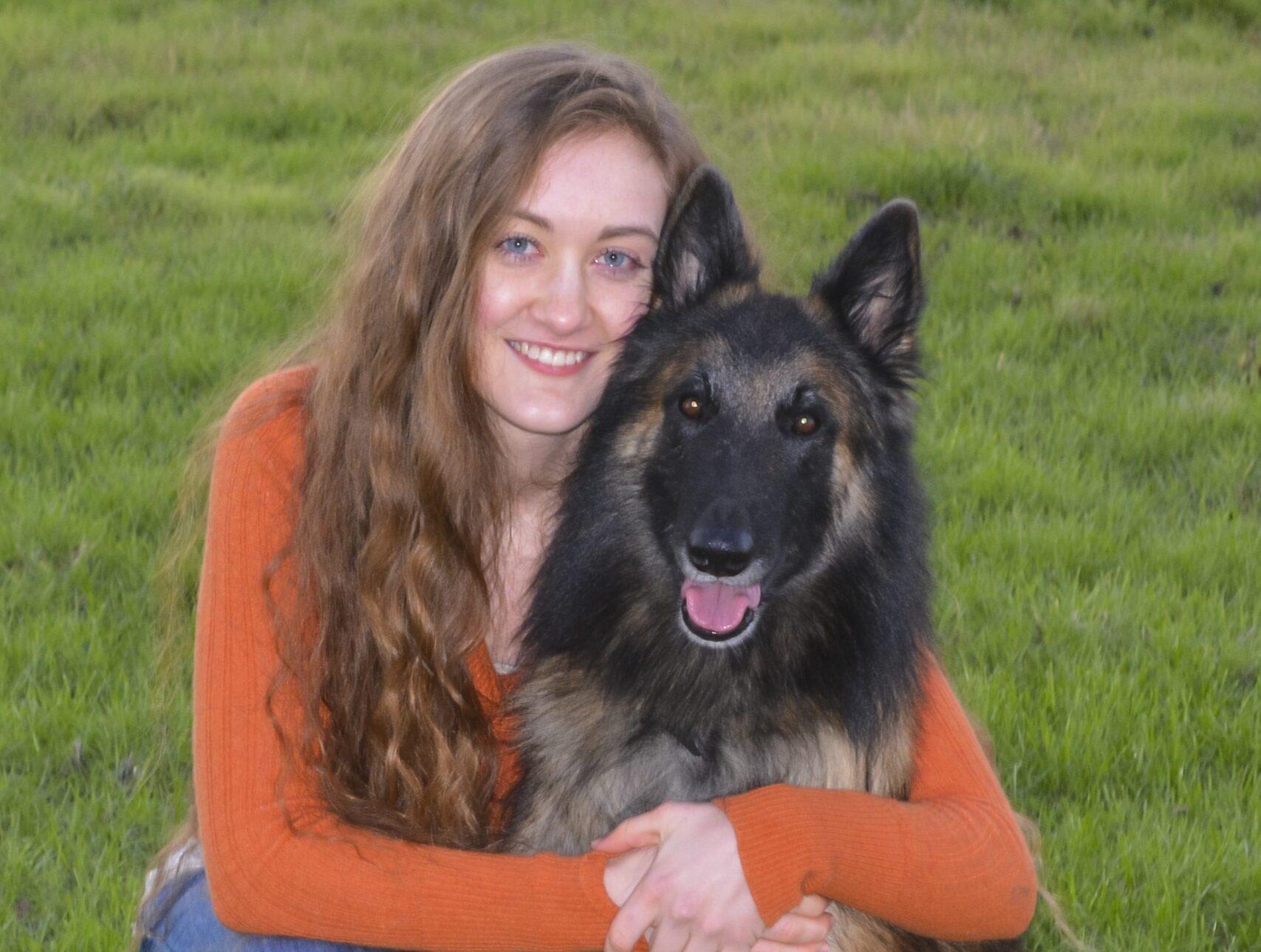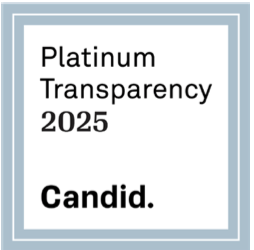A pod of blue whales weaves through Pacific waters, each slender body exceeding the largest dinosaur. A humpback enchants the ocean as his midnight melody travels for miles. A nylon trap twists around a right whale, anchoring her underwater. Eventually, fishermen in pursuit of a different species find and discard her body to the dark sea. An unwanted life becomes an unnecessary death.
Commercial fishing is one of whales’ greatest threats through bycatch—the unintentional capture of nontargeted animals during fishing—and entanglement in inactive fishing gear.

Why Bycatch Is Deadly
Whales use echolocation, which allows them to communicate and navigate without depending on their poor underwater vision. But we dump enormous nets and scatter hundreds of thousands of traps across their feeding grounds and migration routes. What was once an undisturbed journey through open ocean is now a near-invisible maze whales unintentionally, and often fatally, swim into. At least 300,000 whales, dolphins, and porpoises die every year—equivalent to 800 each day—after entanglement in fishing gear. That’s just the death toll we know. Industrial fishing surveillance is challenging, so marine mortality is often unchecked. Whales die out at sea, out of sight, and off the record.
Whales must resurface to breathe, but when they swim into a net or become entangled in fishing lines, they may be stuck underwater too long. As whales struggle against a trap that wasn’t set for them, they steadily run out of air until they suffocate. Many whales manage to escape fishing gear entanglement but not unscathed. Ropes cut into their skin, sometimes to the bone, creating painful wounds across their bodies. Some whales heal, some succumb to infection. Some never fully untangle themselves and swim away with their mouths wired shut. They die the tedious death of starvation. The materials meant to collect our food prevent them from ever eating again.
The Long-Term Effects of Bycatch
Still some whales live for years with fishing gear tangled around their tails, fins, and other body parts. Commercial lobster traps have a buoy on the surface and a vertical rope extended down to cages on the ocean floor. Whales can swim into the ropes and break away, only to have part of the line wrapped around their bodies with the cages attached. Dragging this burden through the ocean, they expend more energy to simply swim, which is especially significant for a female whale since she may not have enough energy left for successful reproduction. Rather than a calf, she carries her exhaustion across the ocean. This exacerbates population recovery challenges for endangered whale species.
The North Atlantic right and Arabian Sea humpback whales are both endangered, and the commercial fishing industry is their number one threat. As many as 80% of right and humpback whales have been entangled in fishing gear at least once, the trauma etched into their flesh. It was once assumed large whale species, such as blue and fin, were mostly spared from fishing-induced suffering since they live farther offshore and are stronger. However, researchers revealed about 60% of blue whales and 50% of fin whales in Canada’s Gulf of St. Lawrence show evidence of entanglement in nets. These are stark differences from the previously assumed 10% entanglement rate for the two species. It seems no whale is safe from industry’s reach.
The Effects of Bycatch on Marine Ecosystems
When whales aren’t safe, neither are their ecosystems. Without ocean mixing, much of the ocean’s nutrients would remain suspended, rather than distributed, through the water. Marine vertebrate activity alone generates one third of all ocean mixing. They are nearly as powerful as tides and wind. Whales contribute by creating a “whale pump.” Each time they dive and resurface, they bring nutrients that may otherwise be stuck in deeper water, or even the ocean floor, closer to the surface. In this way, whales support organisms ranging from aquatic plants to sea birds. Additionally, they create horizontal nutrient movement during their migrations.
Whales also release fecal plumes rich in iron, nitrogen, and phosphorous—all necessary nutrients for phytoplankton. These microscopic marine algae, along with zooplankton which feed on them, are the foundations of marine food webs. Whales’ phytoplankton population boosts ripple up entire ecosystem food chains to krill, fish, and large mammals including other whales. And us. We’ve solidified our spot at the top of oceanic food chains, but without whales, our seafood dependence becomes shaky. Even in places, such as the Southern Ocean, where whale populations were decimated but are now recovering, the rest of the local food chain is still reeling. Commercial fishing is transforming the food chain into a fraying thread we unravel each time we cast our nets into whale habitat.
Whales and Climate Change
Besides boosting food stocks for various species, whales also mitigate climate change. Phytoplankton are photosynthetic, so they absorb carbon dioxide, and when they die, 20-40% of the carbon inside them sinks to the ocean floor. Therefore, by increasing phytoplankton stocks, whales increase carbon dioxide removal from the atmosphere and storage under the sea. Additionally, when whales die and settle to the ocean floor, their bodies act as massive carbon stores with slow rates of decay. If recovered to pre-industrial populations, large baleen whales could have the carbon storage capacity of 110,000 hectares (about 272,000 acres) of forest.
Strategies to Reduce Bycatch
What does it take to recover these, and all, whale populations? It takes the world. Both whales and the fishing industry exist internationally, so international conservation action is necessary.
One strategy to decrease bycatch and entanglement is using new fishing technology. Some lobstermen are now using traps that only release a vertical line through the water column during retrieval or traps that float to the surface with no line involved at all. Transitioning to these and other new harvesting strategies requires time and financial investments that many fishermen and industry stakeholders oppose. People’s livelihoods are on the line. Nation’s must enforce new fishing strategies but in ways that help fishermen transition to the new strategies or new jobs. One way is to subsidize new technology. This may require undesirable financial input from all citizens, but there is a much bigger price involved than anything on a tax bill. Without industry-wide changes, some species, such as North Atlantic right whales, will be swept away to extinction.
We can also reduce whale entanglement by going straight to the source. Decreasing demand for seafood is crucial to whale, and all marine, conservation. Climate change. Habitat Degradation. Pollution. We subject whales to plenty of dangers. We don’t need to add our dinner preferences to the list.
The Best Solution to Reduce Bycatch
It’s important to remember, for most of us, we merely desire fish. The ocean requires whales. They move nutrients, support the food chain, and curb climate change. All we have to do is let them live.
As an individual, it can be intimidating to demand the world look out for its whales. But just as a single whale can support the lives of countless ocean creatures, you can influence entire species’ survival. Even a drop in the ocean creates ripples.
Report Entangled Whales in the United States
- 1-877-SOS-WHALE (767-9425)
- United States Coast Guard on VHF CH-16
- Dolphin and Whale 911 app (for Apple devices)
- NOAA Fisheries (listed by region https://www.fisheries.noaa.gov/report)
Report Stranded Whales Across the World
- Save the Whales (listed by country https://savethewhales.org/report-stranded-whales/)
Sign Petitions
- Change.org (Seaspiracy https://www.change.org/p/we-made-seaspiracy-help-us-protect-our-oceans-from-destructive-commercial-fishing)
Support Organizations
- Sea Shepherd Conservation Society (https://seashepherd.org)
Submit Comments
- International Whaling Commission
- National lawmakers
Sources
- “A Whale of an Effect on Ocean Life: The Ecological and Economic Value of Cetaceans.” Animal Welfare Institute, 2017, https://awionline.org/awi-quarterly/fall-2017/whale-effect-ocean-life-ecological-and-economic-value-cetaceans
- Briggs, Helen. “Whale threats from fishing gear ‘underestimated.’ ” BBC, 9 Feb. 2021, https://www.bbc.com/news/science-environment-55987350
- McCarthy, Joe. “Endangered Whales Are Being Killed by Fishing Gear. New Technology Could Change That.” Global Citizen, 8 Nov. 2019, https://www.globalcitizen.org/en/content/ endangered-right-whales-fishing-gear/
- “Threats.” WWF, https://wwf.panda.org/discover/knowledge_hub/endangered_species/cetaceans/ threats/
- “Whale Entanglement – Building a Global Response.” International Whaling Commission, https://iwc.int/entanglement
- Zuckoff, Eve. “Ropeless Lobster Fishing is Good News For Endangered Whales.” NPR, 19 Feb. 2021, https://www.npr.org/2021/02/19/969559244/ropeless-lobster-fishing-is-good-news-for-endangered-whales
Share on facebook
Facebook
Share on twitter
Twitter
Share on linkedin
LinkedIn
Share on email
Email
Share on print
Print








